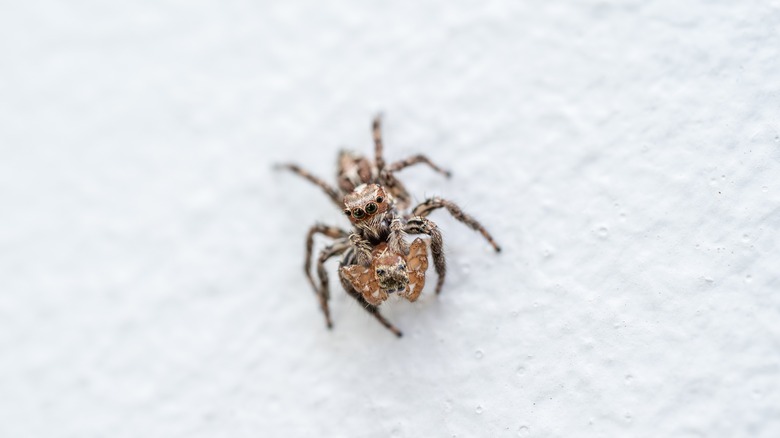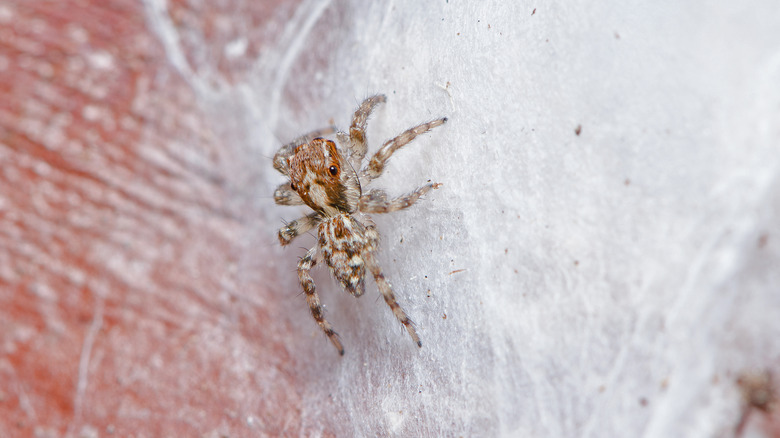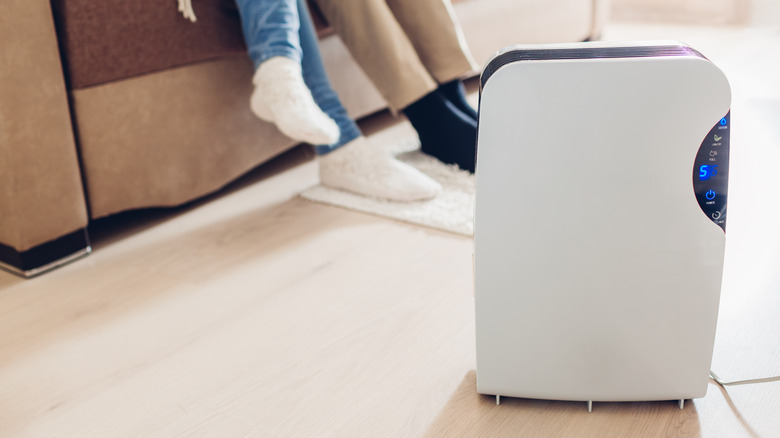Warning Signs Of A Jumping Spider Infestation (And How To Handle It)
As if spiders weren't scary as is, nature decided to create jumping spiders. These creatures are so agile that they can jump over 50 times their body size, meaning that they very much live up to their name. While some jumping spider varieties are colorful, it's hard to find them appealing when their eight eyes stare back at you. However, these eyes serve the arachnid bungee jumpers well, as they can easily stalk their prey and precisely hit their mark. You'll know that jumping spiders have infested your home if you see a hoard of them or notice their egg sacs. Once you've discovered their presence, you can remove them with a vacuum and keep them from coming back by investing in a humidifier and sealing up cracks around windows and doors.
While these tiny critters aren't particularly harmful to humans, they can bite when threatened. However, their bite isn't poisonous to humans, although it may become itchy. At the same time, though they pose little risk to your health and safety, you might want to remove their swarm if these spiders enter and hide in your home. Enduring their swift movements is jarring, after all. You'll first need to identify that jumping spiders are in your home before taking the right measures to get rid of them and keep them out.
Identifying a jumping spider infestation
The easiest way to identify a jumping spider infestation is to come across a hoard of such spiders around multiple locations in your home. You're most likely to spot them around doors and windows, as these are heavy-traffic areas for insects. If you notice spiders in these areas, ensure you don't confuse them with the closely-resembling short-legged black widow spiders due to their size and color. While primarily black, jumping spiders can also have hairy gray or brown bodies. Moreover, in contrast to the characteristic red-to-yellowish-orange patches found on widow spider's abdomens, jumping spiders are marked by colorful stripes and spots, with some in glistening metallic green and blue markings. Sized between 4 to 18 millimeters, they have a prominent front-facing eye pair that might feel sinister when seen in-person.
Another telltale sign of an arachnid infestation is the presence of egg sacs around home corners or in structural gaps. These are tiny, silky sacs that the spiders create to molt and place their eggs in. Bumping into several discarded skins also indicates a spider plague, as these intruders are given to molting. Finally, if you notice spiders erratically leaping around your home, they're most likely swarming it.
How to handle a jumping spider infestation
Once you've confirmed the infestation, it's time to get rid of the spiders. Inspect your home, especially walls and utility pipes, for nooks and crevices where these eight-legged intruders can potentially hide, and block such gaps with sealants or silicone-based caulk. You can also deter these creatures from overstaying their welcome by waterproofing leakages or employing a dehumidifier in damp areas, as they thrive under wet conditions. Also, if your windows open up to overgrown garden vegetation, consider covering them with mesh or a net to prevent the spiders from jumping indoors.
As for live jumping spiders, suck them up with a hose-attached vacuum cleaner and dispose of the bag contents. It's also ideal to regularly wipe down their typical lurking spots to thwart the accumulation of egg capsules. On the other hand, if that sounds like a lot of work, place sticky traps in high arachnid infestation areas to trap them. If this fails, call in a professional to remove the stubborn jumping spider plague effectively.


